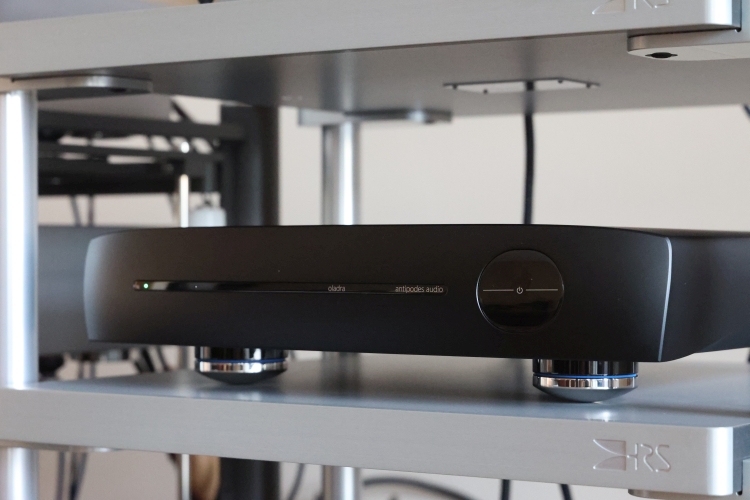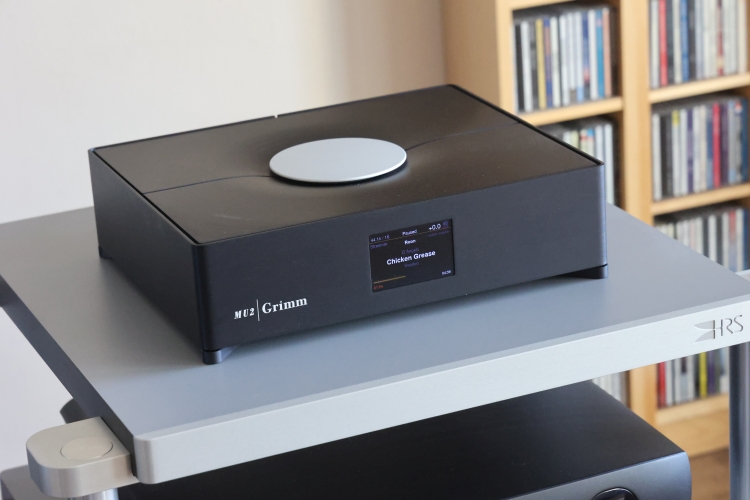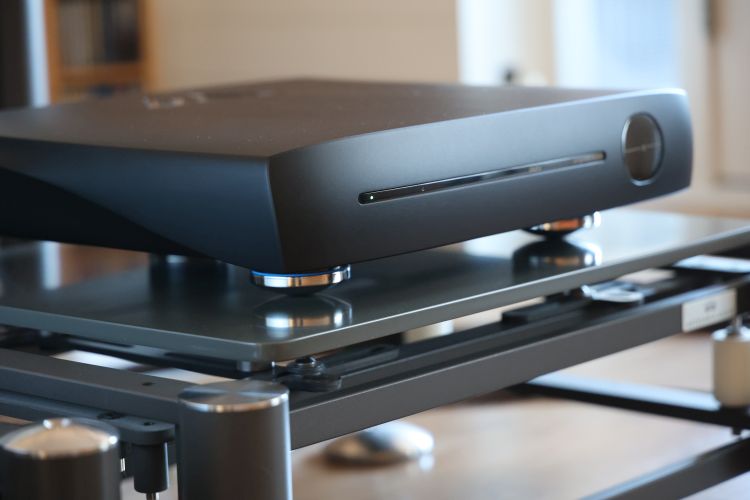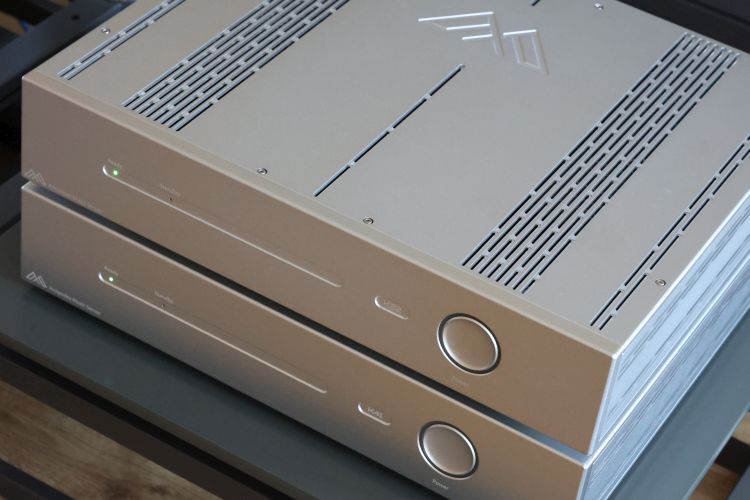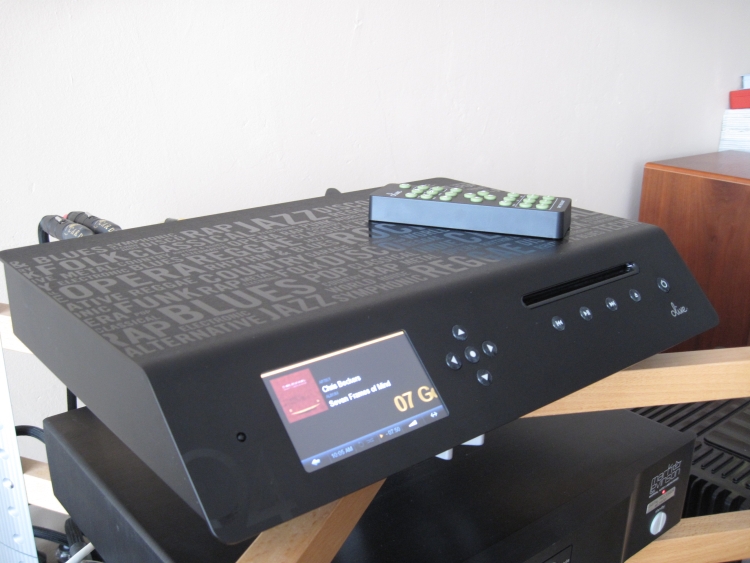
Can we finally banish the PC, monitor and associated mess from the living room and chuck out the CD player?
Review sample kindly supplied by Audiac, distributor for the Netherlands
Retail price 2499 euro
It has to be said: this is my first experience with an all-in-one computer audio playback solution. Thus far I haven’t had high hopes for systems like this, mostly because they are, in effect, a scaled-down but regular computer motherboard, power supply, hard drive, network card and a soundcard in one box. I have been a sceptic for a long time. Needless to say, I didn’t expect too much from the Olive at first. But recent experiences have shown that huge advances have been made in the area of computer audio replay, so I encountered the Olive with an open mind. And it is good that I did because this unit is capable of very, very good audio playback.
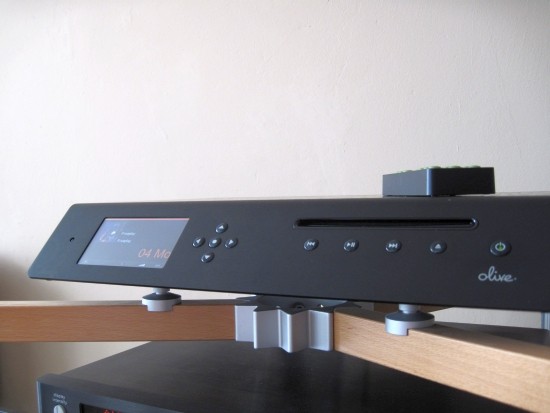
What is it?
The Olive 04HD is mainly a self-contained, all in one solution for ripping cd’s, storing them onto the built-in 2TB hard drive and playing them back from its library, either via the built-in DAC or via digital output into an external DAC. Additionally, the Olive can play files stored on a drive elsewhere in the home network, as long as supported software is installed. I first tried to reach the library on my PC by means of PS Audio’s eLyric server program for Windows and later also on my Mac. But while the Olive could see the directories of both libraries and even the individual tracks, it couldn’t play them.
Likewise, when browsing the networkable content of my HDX1080 Video streamer (not to be confused with Naim’s HDX audio server) I was able to see the Olive’s contents, but I could not play them from the Olive’s front panel. It did work from the i-app though and even my Synology NAS was selected with ease. It turned out that PS Audio’s eLyric iPhone-app also worked with the Olive, once you have selected the Olive from the list of available devices, but artwork isn’t shown when it’s not embedded into the file, for example with WAV files. The important thing is that with the Olive, everything works instantly and there’s no headaches.
Olive recommends TVersity as a server program, which I installed on my Windows computer. Indeed, after this, the server function worked flawlessly. There was no network setup to be done at all: everything went intuitively and automatically. The same goes for ripping a cd: the software automatically connects with a remote server for disk info and album artwork. And should your cd not be in the database, then you can always enter the data manually via the Olive’s built-in touchscreen, or alternatively, comfortably from a computer’s web browser, via an Olive-specific app, called iMaestro. But this only works from a Firefox web browser.
The Olive can be controlled in a number of ways. First off, via its built-in touchscreen display. This works just fine, although my big fingers sometimes touch on the wrong buttons that are a bit small. There are also a number of real buttons on the front like track skip and play/pause. You can also operate the Olive with the supplied infrared remote control, although it can be difficult to browse the library when you’re sitting a few meters from the display. But at least, play, pause and track navigation works fine, and, in fact, just like you’re operating a cd player. And finally, the best option is to operate the Olive with an iPhone/iPod/iPad application which is freely available from the App store. The app used to be called iMaestro but has now been renamed to OliveApp. This app worked absolutely flawlessly: it connected in seconds, found the Olive and not once caused any problems. Even after switching the phone to standby, the app finds the Olive again swiftly and is always ready for operation. You can even tune into internet radio stations via the front panel or the i-app. Very convenient.
The Olive’s intuitive and simple operation also sometimes comes up short, almost like it was trying to be too foolproof. There’s no track time indication, no progress bar and while it’s possible to fast forward by pressing and holding down the skip button, the sound is muted while doing so, and due to the lack of an indicator, you have no idea where you are in the track. This goes for both the front panel display as well as for the i-app. Also, there is no search function with either method, making large libraries somewhat difficult to navigate through because you’ll have to scroll through the entire library to the particular artist you are looking for. What’s also limited is the creation and management of playlists. Both via front panel and i-app it is easy to create a new list and to add tracks to it, but with the i-app you can only add one track at a time, not complete albums. And with the i-app there’s no way to delete tracks from the list or even to delete the lists themselves. That said, it is possible using the front panel or when logging in via the aforementioned Firefox browser. But I’d really want to be able to do this from the comfort of my chair. Certain functionality is a little too restricted. For example, when connecting a hard disk containing music via USB, the Olive comes up with a message asking whether you want to backup or restore. You can’t playback music from it, nor would the output work into a USB dac. Not that that is a problem because the spdif coaxial output works very well for that. While on that subject though, in addition to the spdif output there’s also an spdif input. This can be selected from the touch panel but by entering the digital input mode the machine prohibits any other operation, nor does it re-route the digital input to the digital output, so you’ll be stuck with the analog outputs. Then again: if you have an outboard DAC, you’ll probably have more than one input on it thus rendering this matter moot.
So, here we have an integral solution complete with network compatibility (albeit in limited form), but then again: with the built-in 2TB hard drive, it is doubtful that you’ll quickly run out of disk space. So, as long as your material is ripped to the Olive’s internal drive, or you use compatible server programs, all is good.
There’s a potentially big snag though: even though the Olive makes it easy to create a backup of its library via a USB port on the back, the hard drive will be formatted to an Olive-specific format and the material is encoded so it cannot be read on any other computer. This is probably done to protect the copyright of the encased music. But what if you decide a few years down the line, to switch to another kind of music server? Your only option is to rip all the music again. Once ripped to the Olive, the music belongs to the Olive. This is the one big downside to keep in mind when considering the Olive. From here onwards, it is only good news.
The Olive’s display works well and is pretty intuitive. You can operate it within minutes, without having to read the manual. Not that I ever do of course… My review unit displayed the time and date correctly, shortly after connecting it to the mains power. I thought at first that this was network time but apparently there’s a battery inside that can hold this kind of data for an extended time. The Olive also has a volume control and although I didn’t need to use it, it works well enough.
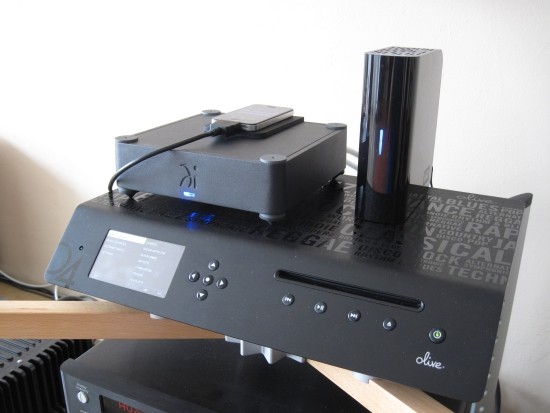
Above: The Olive was compared to the Wadia 171i transport too. The hard drive on the right-hand side used for testing the Olive’s backup capabilities.
First listening – the cinema aka secondary listening room
The first place that I tested the Olive was in my cinema room. That setup consists of a Yamaha DSP-Z7 surround amp and a full complement of B&W Nautilus speakers. In this setup, I connected the Olive with a standard power cord and used its analog outputs with the same cables that are normally connected to the Philips CFD880 cd player. My first impression was of an immensely dynamic, very controlled and very focused sound that had great rhythmic capability and resolution up there with the best cd players. Its dynamics seemed even better than of any cd player I had heard to date. The Olive made for an engaging and very exciting sound in my cinema room!
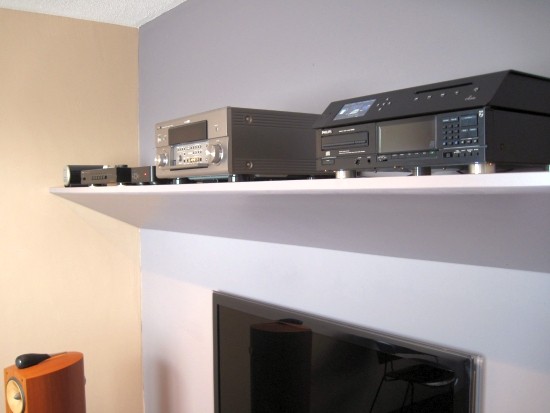
Above: the Olive on top of the Philips CD880 cd player. Hardly the best place for it to sit, but already it displayed almost to its full potential. The Olive is very silent but the spinning of the built-in hard disk could be heard as a low hum when the Olive was placed on the CD880, which sits on an empty wooden construction. This problem vanished once the Olive was placed on the Spider rack in the main listening room.
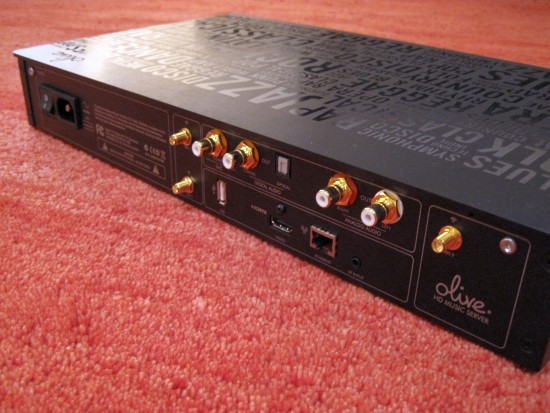
On the rear, you find digital inputs (optical and coaxial) and a coaxial output. Additionally, there’s a USB port for backup and three wifi antenna connections. The analog output is on cinch. The display is actually a lot brighter than it appears on this picture because the angle isn’t optimal here. Besides, you can adjust the brightness via the menu.
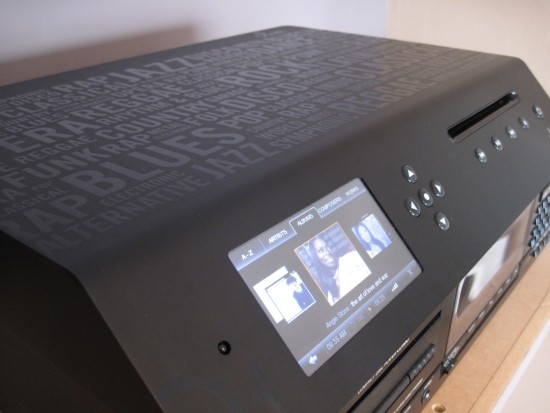
The 04HD is capable of playing back 24-bit 96khz files. They can’t be encoded from a cd but can be dropped in the library by means of a simple remote connection that can be made on any computer, be it a PC or a Mac. Audiac, Olive’s distributor for the Netherlands, made it easy for me by pre-loading the unit with lots of music, even 24 bit, 96khz FLAC files. Some of these sounded utterly amazing in their clarity, dynamics, attack and presence. I did notice, however, that the Olive is not tuned to sound forgiving or warm. Not that it sounds harsh; far from it. It is just utterly neutral and proceeds to get as much information off the disk as possible while not trying to sound like a tube component or masking its nature otherwise. The Olive 04HD is a digital component and when listening to it, there’s no doubt that you’re indeed listening to a digital component, as evidenced by a slightly squarish treble and a little too much overall control for my taste. There are many advantages to digital sound though, such as the aforementioned dynamics, the slam, the articulation and focus etc, and the Olive brings them all to the table. But it can be difficult for a digital component to come across as an analog one. The Olive doesn’t try to fool you into thinking you are listening to a reel to reel deck. But it does offer many if not all of the aspects that digital replay has on offer. And did I mention that its dynamics were spectacular? This is just a first conclusion though and come by only from listening in my secondary listening room. So how does the Olive perform in the main listening room?
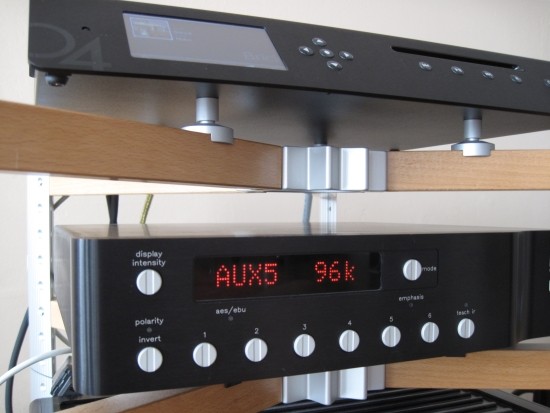
Above: True 96khz playback. The higher sample rates do have a large influence, making the Olive even better than it is with 44k material.
Serious listening
Once the Olive was placed on the Spider rack in the main listening room, serious listening could commence. I connected the Olive both with its analog outputs, via Cardas adaptors, alternately with a Cardas Quadlink 4C and Transparent Ultra XLR cables, as well as using its digital output, using the Wireworld Gold Starlight III coaxial digital cable, into the Levinson no.360S DAC. First up was the Olive, playing back the same tracks I listened to in the cinema room, off its built-in hard drive, using the analog outputs with Transparent Ultra interlink.
Used this way, my impression was of a very neutral sound, with strong points reminiscent of what I heard in the other room. But in the main system, the sound was much more balanced, the treble was smoother and overall the sound was less ballsy and less dynamic than I expected based on my experiences in the other room. First suspect was the Transparent interlink, for I know that it can be a tougher load than regular cables, due to its secret impedance adjustment ingredients inside the “network boxes”. So, I replaced the Transparent with a Cardas Quadlink 4C. And indeed: the Olive’s output stage had difficulty driving the Transparent cable. The Cardas provided much more dynamics and made for more of the lively sound I heard in the other room. There was excellent focus, and detailing was never suspect. Still, it wasn’t portraying dynamics or timing as it did before in the other room. In the main system, even with the Cardas interlink, the Olive sounded very even-handed and highly neutral and really didn’t put a foot wrong. But it just didn’t excite me as much anymore. I now found it to be sounding much like a regular cd player, not even an audiophile one, let alone a reference one. System synergy anyone? Apparently, the combination of a Yamaha amp and B&W Nautilus speakers complimented the Olive better than my more refined Rowland amps and Magnepan speakers. But the Olive holds a secret card in the shape of its digital outputs. So I quickly switched to its coaxial digital output, connected to the Levinson 360S DAC. My response in one word: WOW. Want day and night differences? Here’s a prime example. Combined with the Levinson the Olive is back! Back are its dynamics, its incredible focus, upbeat PRAT and impressive communication skills. What’s more: the Levinson DAC managed to even squeeze out more soundstage depth and width, as well as much beefier bass and a lot more color. I mentioned before that the Olive is a neutral performer, more so than a smooth performer. Even through the Levinson, I was never in doubt of listening to a digital source, but besides a slight dryness in the treble, this was real state of the art sound, now rivaling the best reference cd players in all aspects except treble and air. This was a sound that commanded, no, demanded attention. You just had to listen. And listen I did. I went through many of the pre-installed music and never lost interest. In fact, used in combination with the Levinson DAC, the Olive sounded a lot like the PS Audio PWD. They are more or less in the same camp if we’re talking about dynamics and liveliness, but the PS goes further with better soundstage depth and width, adds an analog feel (lack of digital signature) and has smoother and more extended treble. Nevertheless, I had no trouble listening to the Olive all day. Just so long as the built-in analog output stage was bypassed and the Levinson DAC was used, the music was never anything less than engaging. I also ripped a cd of my own, to see how it held up against the other music that was already present on the Olive’s drive. The ripping process was quick and painless and the resultant sound was excellent, as long as I used WAV as the format to rip to.
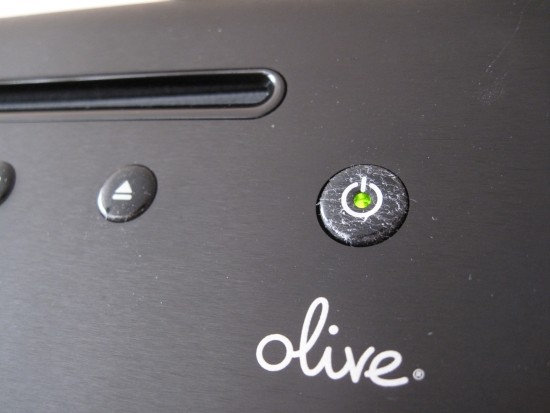
Above: The buttons on the front panel are made from soft rubber that guarantees secure grip but also attracts dust. It is easy to clean with a slightly moist towel though.
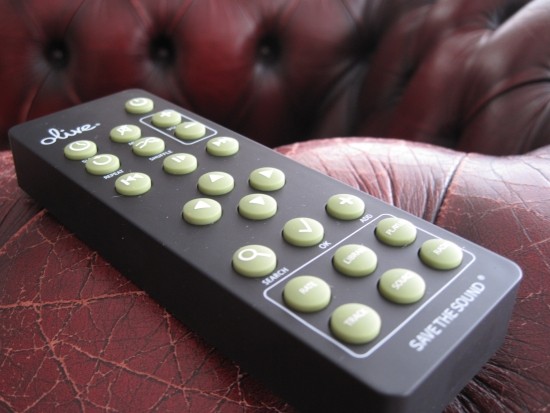
Wadia 27ix GNSC DAC
I’ll quickly touch on the DAC matter because, as with all things in audio: synergy is very important. While the match of the Olive with the Levinson no.360S was a superb one, the components really complementing each other, the match of the Olive with a Wadia 27ix GNSC DAC was less perfect. With this DAC, the sound lost a lot of magic and the Olive’s one weak area was made weaker, the treble becoming darker and rougher. I really missed the sparkle that was there when the Levinson had DAC duty. What’s more: I also reviewed the Wadia 171i transport in combination with an iPhone 4 with the Wadia 27ix GNSC doing DAC duty. That combo was a match made in heaven and produced a superbly airy, open and liquid sound. On balance I would even rate the Wadia iPhone combo at the same level as the Olive/Levinson combo. Crazy times indeed.
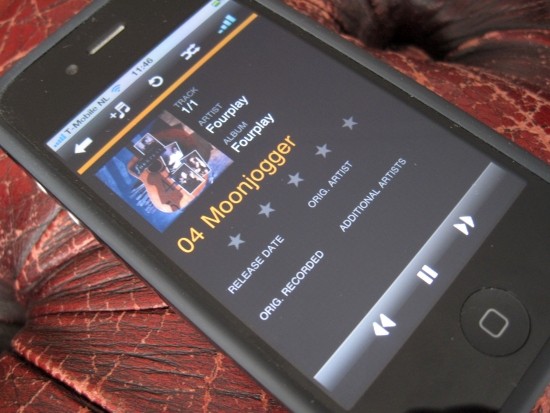
Encoding quality
The Olive can rip disks at various quality levels. I checked WAV, FLAC and mp3. As expected, the WAV was best and the rip sounded every bit as good as the same cd, played back on my Mark Levinson CD player which fed the Olive’s digital input. In fact, it perhaps sounded even better: more energetic and more vibrant. The Levinson managed to instill some more fluidity and smoothness. This is as always a matter of taste and something that is nice about having separates: you can choose to “color” the sound just to your liking by mixing and matching components. Fact is that the rip is of very high quality. Second up was mp3. Even though it was an mp3 of high quality (256kbs), it didn’t quite convince me, sounding rolled off in the treble, less rhythmic and overall soft around the edges. FLAC was much better: back was the liveliness and crispness that WAV had on offer, but still, I found the WAV to be even more open. It was like FLAC was still ever so slightly smoothed over. But it wasn’t unpleasant: in fact, I think that FLAC’s more forgiving nature can work well with many cd’s that are recorded too aggressively.
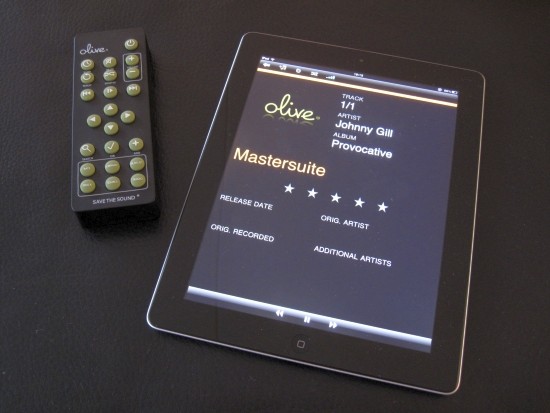
Conclusion
Is the Olive’s worth its price? I’d say yes. Easily. It provides so much comfort, and even in basic shape offers more sound quality than would do a typical 1000 euro cd player. Add in the excellent ripping, generous internal storage, stable operating system and quiet, fanless operation. In addition, it offers a complete lack of headache because it does all the organizing for you and literally takes a lot of work out of your hands. Add a high-end outboard DAC and the Olive rewards with true high-end sound. It is a lot better in many departments than my Best PC-based audio playback Solution. For example, while my PC setup has smoother treble, sounds less digital and is more forgiving, it also doesn’t come close to the dynamics, focus, articulation and excellent pace and rhythm that the Olive has to offer.
So, is the Olive for you? There are really only two variables to consider. Sound quality and Operation. The quality of sound isn’t even really in question because the Olive’s potential even in standard form is already pretty good and if you either already have a good outboard DAC or are willing to invest in one the quality just grows along. The matter of operation comes down to whether you want a solution that-just-works or that you want to be in total control and want to be able to tweak each and every parameter. I think that it is pretty easy to decide which camp you are in. A no-brainer? You bet.




